第45章 CHAPTER VIII--MADAM HOW$$$$$S TWO GRANDSONS(4)
No; that is no cockle. Madam How invented that ages and ages before she thought of cockles, and the animal which lived inside that shell was as different from a cockle-animal as a sparrow is from a dog. That is a Terebratula, a gentleman of a very ancient and worn-out family. He and his kin swarmed in the old seas, even as far back as the time when the rocks of the Welsh mountains were soft mud; as you will know when you read that great book of Sir Roderick Murchison's, Siluria. But as the ages rolled on, they got fewer and fewer, these Terebratulae; and now there are hardly any of them left; only six or seven sorts are left about these islands, which cling to stones in deep water; and the first time I dredged two of them out of Loch Fyne, I looked at them with awe, as on relics from another world, which had lasted on through unnumbered ages and changes, such as one's fancy could not grasp.
But you will agree that, if Master Analysis took that shell to pieces, Master Synthesis would not be likely to put it together again; much less to put it together in the right way, in which Madam How made it.
And what was that?
By making a living animal, which went on growing, that is, making itself; and making, as it grew, its shell to live in. Synthesis has not found out yet the first step towards doing that; and, as I believe, he never will.
But there would be no harm in his trying?
Of course not. Let everybody try to do everything they fancy.
Even if they fail, they will have learnt at least that they cannot do it.
But now--and this is a secret which you would never find out for yourself, at least without the help of a microscope--the greater part of this lump of chalk is made up of things which neither Analysis can perfectly take to pieces, nor Synthesis put together again. It is made of dead organisms, that is, things which have been made by living creatures. If you washed and brushed that chalk into powder, you would find it full of little things like the Dentalina in this drawing, and many other curious forms. I will show you some under the microscope one day.
They are the shells of animals called Foraminifera, because the shells of some of them are full of holes, through which they put out tiny arms. So small they are and so many, that there may be, it is said, forty thousand of them in a bit of chalk an inch every way. In numbers past counting, some whole, some broken, some ground to the finest powder, they make up vast masses of England, which are now chalk downs; and in some foreign countries they make up whole mountains. Part of the building stone of the Great Pyramid in Egypt is composed, I am told, entirely of them.
And how did they get into the chalk?
Ah! How indeed? Let us think. The chalk must have been laid down at the bottom of a sea, because there are sea-shells in it.
Besides, we find little atomies exactly like these alive now in many seas; and therefore it is fair to suppose these lived in the sea also.
Besides, they were not washed into the chalk by any sudden flood.
The water in which they settled must have been quite still, or these little delicate creatures would have been ground into powder--or rather into paste. Therefore learned men soon made up their minds that these things were laid down at the bottom of a deep sea, so deep that neither wind, nor tide, nor currents could stir the everlasting calm.
Ah! it is worth thinking over, for it shows how shrewd a giant Analysis is, and how fast he works in these days, now that he has got free and well fed;--worth thinking over, I say, how our notions about these little atomies have changed during the last forty years.
We used to find them sometimes washed up among the sea-sand on the wild Atlantic coast; and we were taught, in the days when old Dr.
Turton was writing his book on British shells at Bideford, to call them Nautili, because their shells were like Nautilus shells. Men did not know then that the animal which lives in them is no more like a Nautilus animal than it is like a cow.
For a Nautilus, you must know, is made like a cuttlefish, with eyes, and strong jaws for biting, and arms round them; and has a heart, and gills, and a stomach; and is altogether a very well- made beast, and, I suspect, a terrible tyrant to little fish and sea-slugs, just as the cuttlefish is. But the creatures which live in these little shells are about the least finished of Madam How's works. They have neither mouth nor stomach, eyes nor limbs.